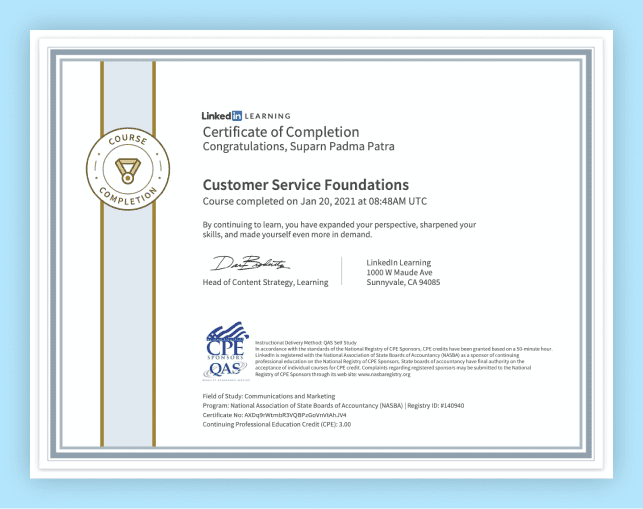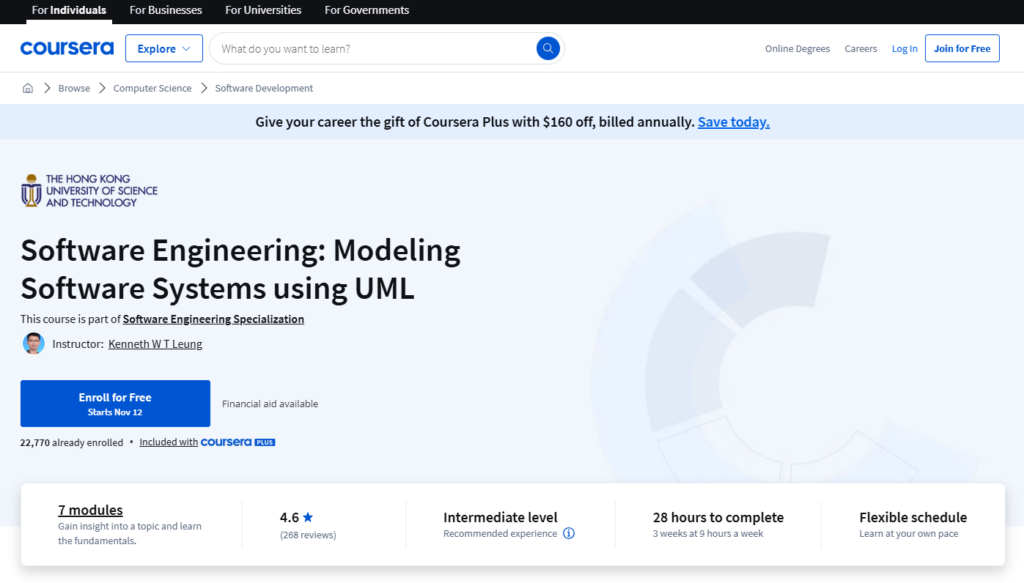All Categories
Featured
Table of Contents
- – All about Machine Learning Engineer: A Highly ...
- – Excitement About 6 Steps To Become A Machine L...
- – How Llms And Machine Learning For Software En...
- – The Ultimate Guide To Machine Learning Engineer
- – How To Become A Machine Learning Engineer (2...
- – Everything about How To Become A Machine Lea...
- – Some Known Details About Top 20 Machine Lear...
Some people assume that that's dishonesty. Well, that's my entire career. If somebody else did it, I'm going to utilize what that individual did. The lesson is placing that apart. I'm requiring myself to analyze the feasible remedies. It's more concerning taking in the material and attempting to use those ideas and less regarding finding a collection that does the job or searching for someone else that coded it.
Dig a little bit deeper in the mathematics at the beginning, just so I can build that foundation. Santiago: Ultimately, lesson number 7. This is a quote. It claims "You need to comprehend every detail of an algorithm if you intend to utilize it." And after that I claim, "I think this is bullshit recommendations." I do not believe that you need to comprehend the nuts and screws of every algorithm prior to you utilize it.
I've been making use of neural networks for the longest time. I do have a sense of exactly how the gradient descent works. I can not explain it to you right currently. I would certainly need to go and inspect back to really get a much better instinct. That does not imply that I can not address things using neural networks? (29:05) Santiago: Trying to compel people to believe "Well, you're not mosting likely to succeed unless you can clarify every information of just how this works." It returns to our sorting example I assume that's just bullshit recommendations.
As a designer, I've functioned on numerous, many systems and I've made use of numerous, lots of things that I do not understand the nuts and bolts of how it functions, although I understand the impact that they have. That's the final lesson on that particular thread. Alexey: The amusing point is when I think of all these libraries like Scikit-Learn the formulas they utilize inside to execute, for example, logistic regression or something else, are not the exact same as the algorithms we study in artificial intelligence courses.
All about Machine Learning Engineer: A Highly Demanded Career ...
Even if we attempted to find out to obtain all these fundamentals of equipment understanding, at the end, the algorithms that these libraries utilize are various. Santiago: Yeah, absolutely. I assume we require a great deal much more pragmatism in the market.
Incidentally, there are two various courses. I generally speak with those that intend to work in the market that wish to have their impact there. There is a course for researchers and that is completely various. I do not attempt to speak regarding that due to the fact that I do not understand.
But right there outside, in the industry, pragmatism goes a lengthy means for certain. (32:13) Alexey: We had a comment that stated "Really feels even more like motivational speech than discussing transitioning." Possibly we must switch over. (32:40) Santiago: There you go, yeah. (32:48) Alexey: It is an excellent motivational speech.
Excitement About 6 Steps To Become A Machine Learning Engineer
Among things I intended to ask you. I am taking a note to speak concerning progressing at coding. Initially, allow's cover a couple of things. (32:50) Alexey: Let's begin with core tools and structures that you require to find out to in fact change. Allow's claim I am a software program engineer.
I understand Java. I know how to make use of Git. Possibly I know Docker.
What are the core devices and structures that I need to learn to do this? (33:10) Santiago: Yeah, absolutely. Excellent inquiry. I believe, leading, you should begin finding out a little bit of Python. Since you already know Java, I do not assume it's mosting likely to be a substantial transition for you.
Not because Python coincides as Java, however in a week, you're gon na obtain a great deal of the differences there. You're gon na be able to make some development. That's number one. (33:47) Santiago: Then you obtain certain core tools that are going to be made use of throughout your entire career.
How Llms And Machine Learning For Software Engineers can Save You Time, Stress, and Money.
That's a library on Pandas for data adjustment. And Matplotlib and Seaborn and Plotly. Those three, or among those three, for charting and showing graphics. After that you get SciKit Learn for the collection of machine understanding algorithms. Those are devices that you're going to have to be utilizing. I do not recommend just going and finding out about them unexpectedly.
We can speak about particular training courses later on. Take among those courses that are going to begin introducing you to some troubles and to some core ideas of artificial intelligence. Santiago: There is a program in Kaggle which is an intro. I do not bear in mind the name, yet if you most likely to Kaggle, they have tutorials there for free.
What's good regarding it is that the only need for you is to recognize Python. They're mosting likely to provide a problem and tell you how to make use of choice trees to fix that specific issue. I assume that procedure is very effective, since you go from no equipment discovering history, to recognizing what the issue is and why you can not fix it with what you understand today, which is straight software application design practices.
The Ultimate Guide To Machine Learning Engineer
On the various other hand, ML designers focus on structure and releasing artificial intelligence designs. They concentrate on training models with data to make predictions or automate jobs. While there is overlap, AI designers handle more diverse AI applications, while ML designers have a narrower concentrate on artificial intelligence algorithms and their sensible implementation.

Machine understanding engineers focus on developing and deploying maker discovering versions right into production systems. On the other hand, data scientists have a wider role that consists of data collection, cleansing, exploration, and structure models.
As companies progressively take on AI and artificial intelligence modern technologies, the need for competent professionals expands. Equipment learning designers service advanced jobs, add to innovation, and have competitive salaries. Success in this area needs continuous learning and maintaining up with advancing innovations and methods. Artificial intelligence duties are typically well-paid, with the potential for high earning potential.
ML is essentially various from conventional software application development as it concentrates on training computers to discover from data, as opposed to programs explicit regulations that are executed systematically. Unpredictability of results: You are possibly utilized to creating code with foreseeable results, whether your function runs as soon as or a thousand times. In ML, nevertheless, the end results are less particular.

Pre-training and fine-tuning: How these models are trained on vast datasets and after that fine-tuned for particular jobs. Applications of LLMs: Such as message generation, view analysis and details search and retrieval.
How To Become A Machine Learning Engineer (2025 Guide) Can Be Fun For Anyone
The ability to take care of codebases, merge modifications, and deal with conflicts is simply as vital in ML development as it remains in conventional software application tasks. The abilities created in debugging and screening software application applications are highly transferable. While the context might alter from debugging application logic to identifying concerns in data handling or design training the underlying principles of methodical examination, theory screening, and iterative refinement coincide.
Artificial intelligence, at its core, is heavily dependent on data and chance concept. These are crucial for understanding just how algorithms pick up from data, make forecasts, and examine their efficiency. You need to consider becoming comfy with ideas like statistical relevance, circulations, theory testing, and Bayesian reasoning in order to layout and analyze models efficiently.
For those curious about LLMs, a thorough understanding of deep understanding designs is advantageous. This includes not only the mechanics of neural networks yet also the style of specific designs for various use instances, like CNNs (Convolutional Neural Networks) for photo processing and RNNs (Persistent Neural Networks) and transformers for consecutive information and natural language handling.
You should be aware of these problems and learn strategies for determining, mitigating, and interacting about bias in ML designs. This includes the potential influence of automated decisions and the ethical implications. Numerous versions, specifically LLMs, call for significant computational sources that are frequently supplied by cloud systems like AWS, Google Cloud, and Azure.
Structure these abilities will not just assist in an effective shift right into ML but additionally ensure that developers can contribute properly and responsibly to the advancement of this vibrant area. Concept is essential, yet absolutely nothing beats hands-on experience. Beginning servicing tasks that enable you to apply what you've discovered in a practical context.
Take part in competitions: Sign up with platforms like Kaggle to get involved in NLP competitors. Build your jobs: Beginning with simple applications, such as a chatbot or a message summarization device, and progressively enhance intricacy. The field of ML and LLMs is swiftly developing, with new innovations and modern technologies arising routinely. Remaining updated with the current study and fads is important.
Everything about How To Become A Machine Learning Engineer
Contribute to open-source tasks or compose blog site messages about your discovering journey and tasks. As you gain knowledge, begin looking for opportunities to include ML and LLMs right into your job, or look for brand-new duties concentrated on these technologies.

Prospective usage instances in interactive software, such as suggestion systems and automated decision-making. Comprehending uncertainty, fundamental analytical actions, and chance distributions. Vectors, matrices, and their duty in ML formulas. Error minimization strategies and gradient descent explained merely. Terms like design, dataset, attributes, labels, training, reasoning, and recognition. Information collection, preprocessing strategies, design training, evaluation procedures, and deployment factors to consider.
Decision Trees and Random Forests: Instinctive and interpretable models. Support Vector Machines: Optimum margin classification. Matching trouble kinds with proper designs. Stabilizing efficiency and intricacy. Fundamental structure of semantic networks: nerve cells, layers, activation functions. Layered computation and forward proliferation. Feedforward Networks, Convolutional Neural Networks (CNNs), Reoccurring Neural Networks (RNNs). Picture acknowledgment, sequence prediction, and time-series evaluation.
Constant Integration/Continuous Release (CI/CD) for ML workflows. Version tracking, versioning, and performance tracking. Spotting and dealing with adjustments in model performance over time.
Some Known Details About Top 20 Machine Learning Bootcamps [+ Selection Guide]

You'll be introduced to 3 of the most pertinent elements of the AI/ML discipline; overseen knowing, neural networks, and deep knowing. You'll grasp the distinctions between conventional programming and device discovering by hands-on development in supervised knowing before building out complicated distributed applications with neural networks.
This program functions as a guide to maker lear ... Show More.
Table of Contents
- – All about Machine Learning Engineer: A Highly ...
- – Excitement About 6 Steps To Become A Machine L...
- – How Llms And Machine Learning For Software En...
- – The Ultimate Guide To Machine Learning Engineer
- – How To Become A Machine Learning Engineer (2...
- – Everything about How To Become A Machine Lea...
- – Some Known Details About Top 20 Machine Lear...
Latest Posts
How To Succeed In Data Engineering Interviews – A Comprehensive Guide
How To Get A Faang Job Without Paying For An Expensive Bootcamp
The Most Difficult Technical Interview Questions Ever Asked
More
Latest Posts
How To Succeed In Data Engineering Interviews – A Comprehensive Guide
How To Get A Faang Job Without Paying For An Expensive Bootcamp
The Most Difficult Technical Interview Questions Ever Asked